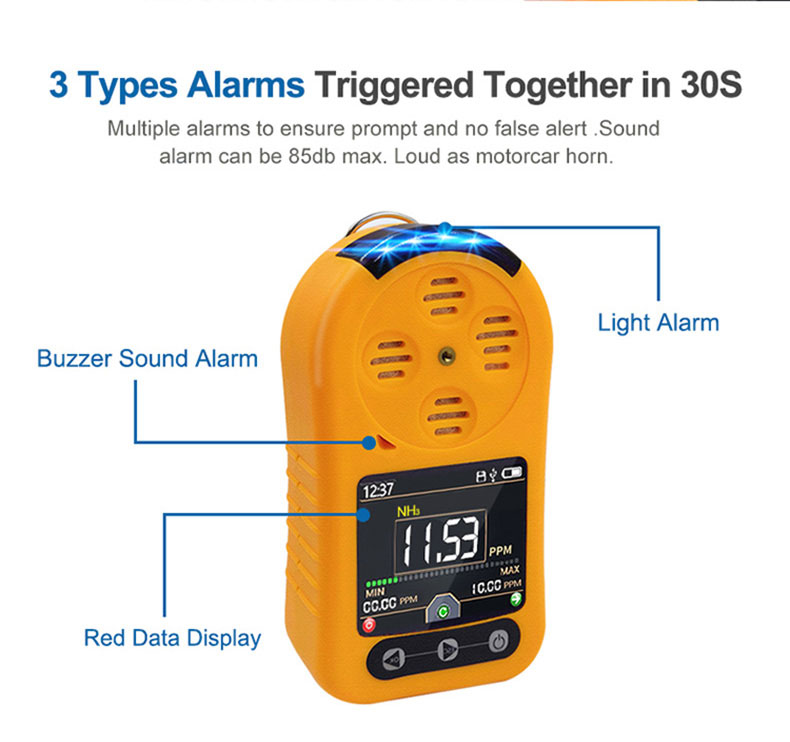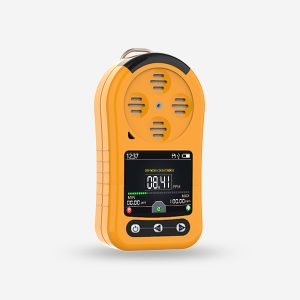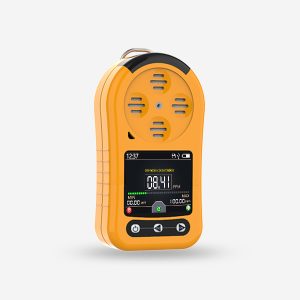Portable PH3 gas detector Introduction
Portable PH3 gas detector is easy to carry to the site to detect phosphine gas concentration, and can exceed the limit of multiple alarm gas detection instrument. Portable phosphine gas detector equipment with ABS engineering plastic shell, waterproof splash, dust proof, explosion-proof, the use of high sensitive quality electrochemical phosphine sensor probe, sensitive response, fast response speed, accurate measurement. The equipment can be mastered in one hand, feel comfortable, light and portable. Widely used in gas storage leakage monitoring, food factory, greenhouse detection, workshop disinfection residue detection, gas leakage, indoor air gas detection and other occasions.

Portable PH3 gas detector Features
1, high quality sensor, high sensitive probe
Sensitive response, quick response, accurate measurement.
2, mechanical principle, humanized design
Anti-slip design based on the principle of human mechanics, let us ensure the sensitivity and accuracy of the product under the premise of strengthening human comfort, so that the product in line with human operating habits.
3, 200,000 data storage/large capacity
One click export/fast and convenient, can enter the menu to view, can browse/delete records.
Portable PH3 gas detector Parameters
Detection gas: phosphine
Phosphine measurement range: 0-20ppm
Phosphine measurement resolution: 0.1ppm
Phosphine measurement default alarm point: 5ppm
Measurement method: electrochemical
Charging time: ≤8H (standard)
Display error: ≤ soil 3%F.S
Explosion-proof mark: EXIA II CT6
Recovery time: ≤30S
Protection level: IP65
Response time: T90<30s
Linearity: ≤ 2
Repeatability: ≤ soil 2
Power supply: 3.6V DC, 1500mAh (standard) lithium battery

Application:
The instrument can easily handle various application environments, suitable for gas storage leak monitoring, food factory, greenhouse detection, workshop disinfection residue detection, gas leakage, indoor air gas detection.
FAQs
What is phosphine gas?
Phosphine, an inorganic compound with chemical formula PH3, is a colorless, highly toxic and flammable liquefied compressed gas stored in cylinders. Pure phosphine gas IS colorLESS and odorLESS, but when phosphine is produced from METAL phosphines it often smells of acetylene or garlic or rotten fish. If encountering trace hydrides of other phosphorus such as eophosphine, it will cause spontaneous combustion. Inhalation of phosphine can affect the heart, respiratory system, kidneys, stomach, nervous system and liver.
What is phosphine gas sensor?
Phosphine sensor is suitable for all kinds of environment and special environment in the volatile organic phosphine gas concentration and leakage, online detection and field sound and light report The instrument adopts imported electrochemical sensor and microcontroller technology, which has the advantages of stable signal, high precision and good repeatability. The explosion-proof wiring mode is suitable for all kinds of dangerous places.
What are the hazards of phosphine gas?
Hazard 1: Inhalation of phosphine can affect the heart, respiratory system, kidneys, stomach, nervous system and liver. Any excessive exposure to phosphine and its by-products requires immediate medical attention.
Hazard two: phosphine is a highly toxic substance, which is mainly inhaled through the respiratory tract. Phosphine entering the body is distributed to various organs and tissues of the body through the blood, with the highest content in liver, kidney and spleen. Phosphine is metabolically broken down in the body and eventually excreted in the urine as inorganic phosphorus and phosphate. A small amount of phosphine is exhaled through the lungs in its original form.
Harm three: The toxic effect of phosphine is mainly to damage the central nervous system and liver, kidney, heart and other parenchymal organs.
Hazard four: The characteristic of phosphine poisoning is that it does not stimulate the respiratory mucosa under the condition of inhalation and directly lead to acute poisoning death.
Hazard five: long-term exposure to low concentration phosphine can lead to dizziness, headache, insomnia, weakness, nausea, loss of appetite, dry nose, hypoolfaction and other symptoms.




Reviews
There are no reviews yet.